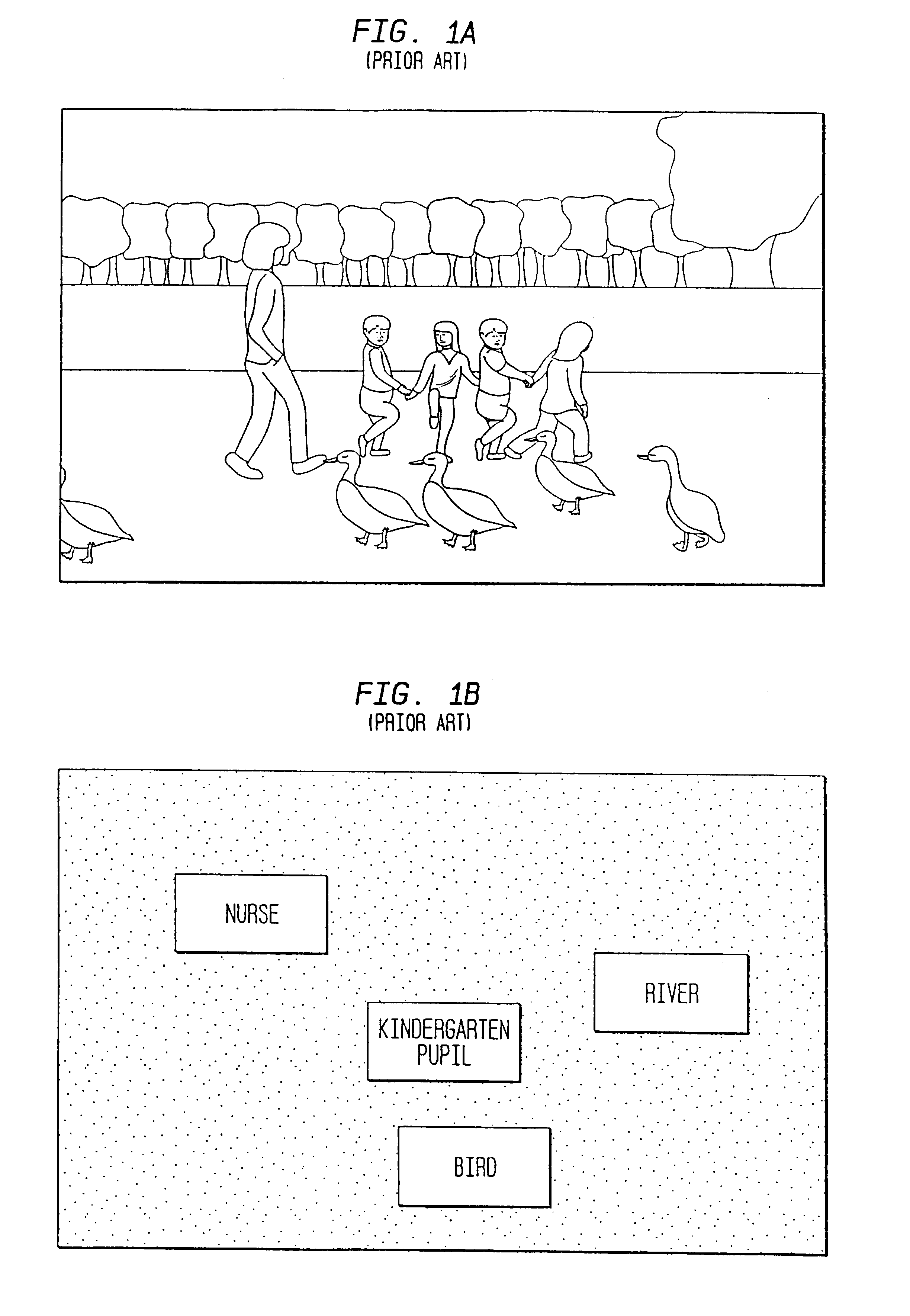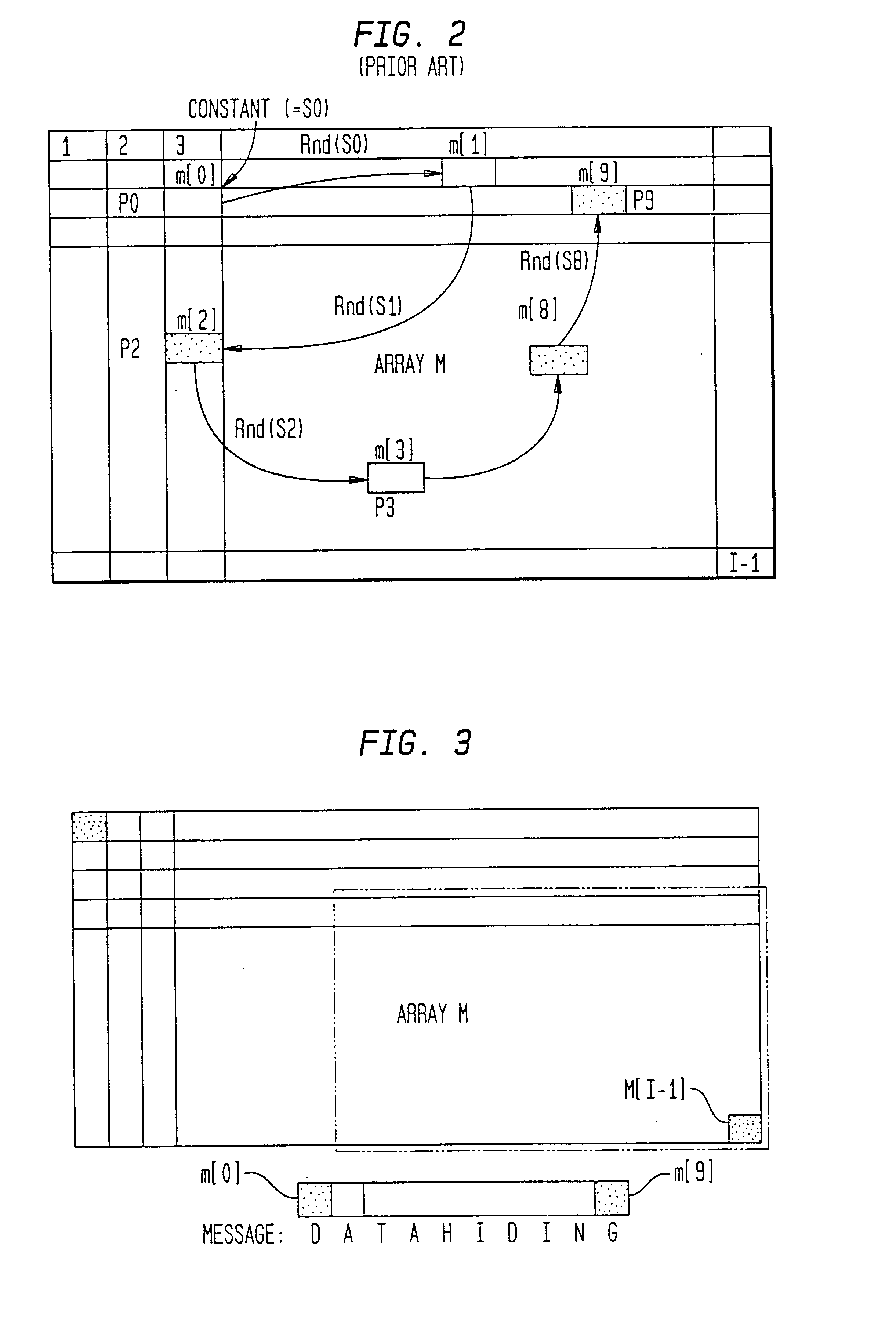Data hiding and extraction methods
a data and extraction technology, applied in the field of data hiding methods, can solve the problems of affecting the quality of the region, affecting the effectiveness of conventional methods, and affecting the use of unfair methods
- Summary
- Abstract
- Description
- Claims
- Application Information
AI Technical Summary
Benefits of technology
Problems solved by technology
Method used
Image
Examples
first embodiment
C. First Embodiment
A first embodiment is specifically described in conjunction with the procedure in FIG. 6. FIG. 6 is a flowchart showing a procedure for hiding message data in media data. In the following description, reference FIGS. 4 or 5 as appropriate.
Calculation of the Initial State Value (Step 100)
To hide data, the position sequence (p) must be determined. To do this, the initial position p[0] is first determined. The initial position p[0] is determined as the output of the initial function f.sub.INI using the initial state value S.sub.0 as an input, and the variable S.sub.0 is determined by the following equation.
S.sub.0 =f.sub.INI (m[0], m[1], m[2], . . . , M[J-1])=H1(m[0] / / m[1] / / m[2] / / . . . / / M[J-1]) [Equation 10]
In the above equation, H1 is a hash function. In addition, the operator " / / " means that the elements of the message array are connected together. The specific operation may be, for example, the exclusive OR of the data in the array elements. If, however, the exc...
second embodiment
D. Second Embodiment
This section describes Pixel Block Coding (hereafter referred to as "PBC") that is one of the methods of embedding in media data to be hidden and extracting the hidden data. With PBC, data hiding and extraction can be processed according to the translation rule described below.
(Basic Algorithm)
The primary characteristics of the pixel values of two adjacent pixels generally have a high correlation. Thus, even if the pixel values are exchanged between adjacent pixels, the image will not be visibly degraded. In view of this nature, the present algorithm defines an image region with at least one pixel as a pixel block, and hides one bit data by intentionally exchanging the characteristic values of adjacent pixel blocks based on a particular translation rule. That is, data is expressed by exchanging the characteristic values of adjacent pixel blocks. In addition, data is extracted according to an extraction rule determined by this translation rule.
Bit information is e...
third embodiment
E. Third Embodiment
This section describes a method of hiding information the reference position. The above data hiding technique selects and processes pixel blocks from an original image and extracts a message from the processed pixel blocks. Thus, the positional information on pixel blocks is essential in extracting messages. The positions of pixel blocks are relatively identified using a certain region in the image (in the first embodiment, the upper left corner of the original image) as a reference. If, however, a third person edits the image, for example, cuts off part of the image, the reference position of the image cannot be identified, thereby preventing the message from being extracted. Referencing FIG. 3(a) again, if part of the original image (the area enclosed by the broken line in the figure) is cut off, the original reference position (the position M[0] of the 0-th array element in the message array) cannot be determined from the remaining screen.
The important requirem...
PUM
 Login to View More
Login to View More Abstract
Description
Claims
Application Information
 Login to View More
Login to View More - R&D
- Intellectual Property
- Life Sciences
- Materials
- Tech Scout
- Unparalleled Data Quality
- Higher Quality Content
- 60% Fewer Hallucinations
Browse by: Latest US Patents, China's latest patents, Technical Efficacy Thesaurus, Application Domain, Technology Topic, Popular Technical Reports.
© 2025 PatSnap. All rights reserved.Legal|Privacy policy|Modern Slavery Act Transparency Statement|Sitemap|About US| Contact US: help@patsnap.com



